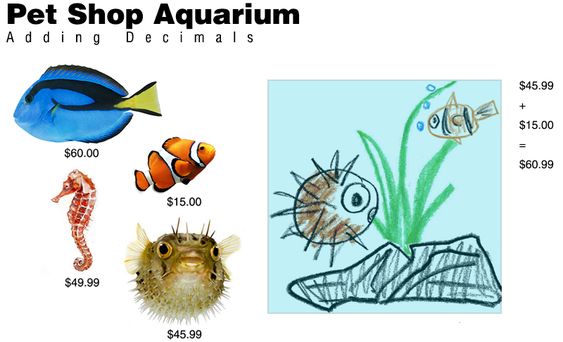Introduction:
Mathematics can be fun when you incorporate exciting, real-life scenarios into the learning process. One such activity involves creating a pet store setup where students can practice decimals, area, and perimeter calculations. This engaging math activity not only strengthens students’ skills in these essential areas but also sparks their creativity and problem-solving abilities.
Materials Required:
– Rulers
– Grid paper or graph paper
– Pencils and erasers
– Calculators (optional)
Instructions:
1. Preparation: To begin with this pet store math activity, ask the students to draw a blueprint of their ideal pet store on grid paper incorporating different enclosures to hold animals like fish tanks, bird cages, and spaces for dogs and cats.
2. Designing Enclosures: Ensure students create rectangular enclosures to simplify the area and perimeter calculations. They should include the dimensions (length and width) of each enclosure on their drawing.
3. Decimal Conversion: Next, have them determine the cost of the animals in the enclosures by assigning each animal a decimal price; for example, a fish can cost $2.50 while a bird may cost $9.75.
4. Total Animal Purchase Cost: Students will add up the cost of each animal within their individual enclosure to find out how much it will cost to buy all the animals in that space.
5. Enclosure Perimeter and Area Calculation: Guide students through calculating both the area and perimeter of each enclosure. Remind them that they need to use the length and width dimensions they labeled on their blueprint.
– Area (A): A = Length × Width
– Perimeter (P): P = 2 × (Length + Width)
6. Flooring Cost Estimation: Now that they have their enclosures’ area figures, students must estimate different flooring materials needed for pets and the respective cost per square unit, e.g., Cost of flooring for bird cages would be $4.00 per square unit area.
7. Calculate Flooring Expense: To determine each enclosure’s total flooring expense, they should multiply the enclosure’s area value by the cost of flooring per square unit area.
8. Total Pet Store Cost: Finally, guide students in compiling the total cost of animals purchased (Step 4) plus the total flooring expense (Step 7) for their pet store to find the overall expenses needed to set up their imaginary pet store.
Conclusion:
This pet store math activity offers a fantastic opportunity for students to practice decimals, area, and perimeter calculations in a fun, interactive way. Integrating practical scenarios into math lessons helps learners understand the importance of these mathematical concepts and their role in real-world problem-solving. Additionally, engaging students with such creative activities promotes teamwork and communication skills as they work alongside their peers.





